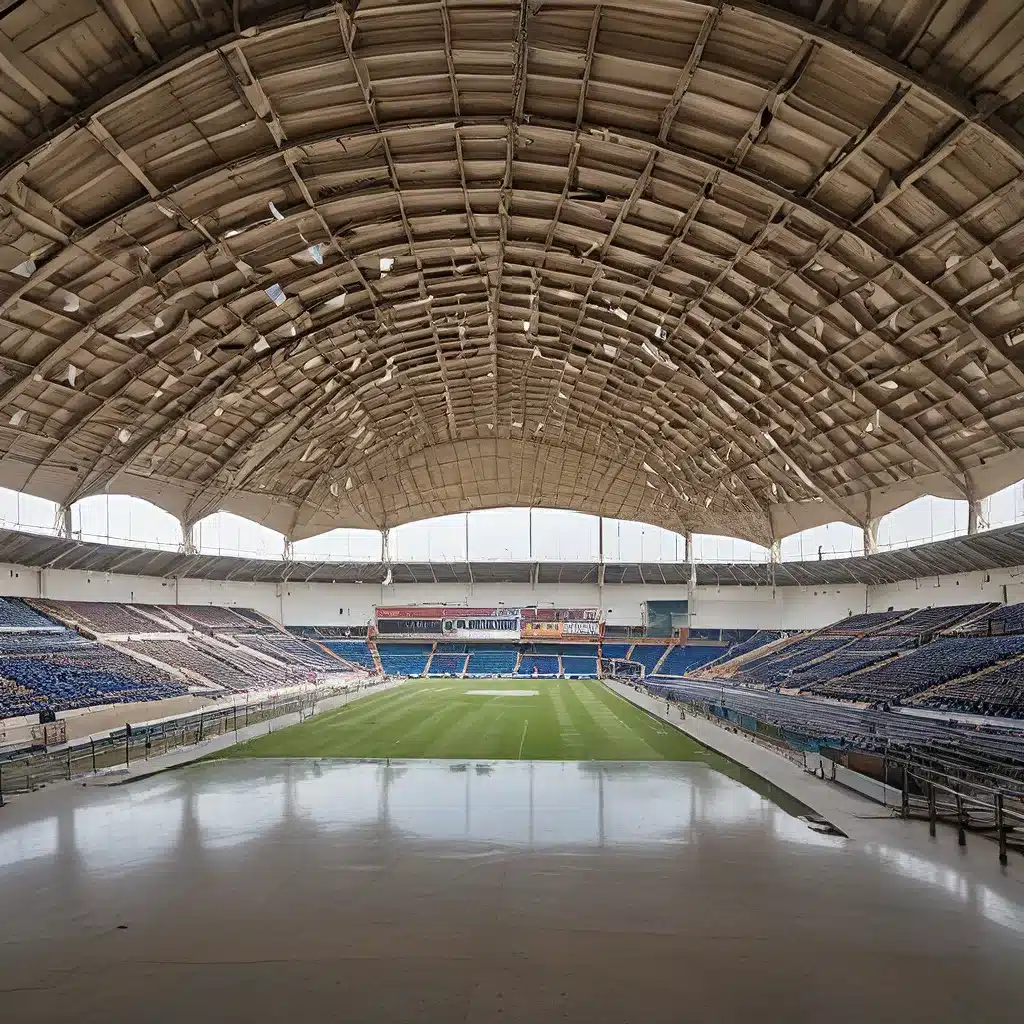
The Iconic Landmark of Lahore
Gaddafi Stadium, named after the former Libyan leader Muammar Gaddafi, stands as a testament to the rich sporting heritage of Lahore, Pakistan. This colossal structure, situated in the heart of the bustling city, has played a pivotal role in shaping the nation’s cricketing legacy, hosting some of the most thrilling matches and landmark events in the history of the sport.
Constructed in 1959, Gaddafi Stadium has undergone a remarkable transformation over the decades, evolving from a modest cricket ground to a world-class sporting venue that has captivated audiences across the globe. The stadium’s architectural design, a fusion of modern and traditional elements, has earned it a distinct place in the annals of sports infrastructure, making it a must-visit destination for cricket enthusiasts and architectural enthusiasts alike.
A Tribute to Sporting Excellence
The stadium’s origins can be traced back to the pre-independence era when it was known as the Lahore Stadium. In 1959, the venue underwent a significant expansion and renovation, transforming it into the Gaddafi Stadium we know today. The driving force behind this transformation was the vision of former Pakistani President Ayub Khan, who recognized the importance of fostering a vibrant sporting culture in the country.
Gaddafi Stadium’s capacity has grown from its initial 15,000 seats to an impressive 27,000, with the addition of modern amenities, including state-of-the-art floodlights, high-quality turf, and a comprehensive media center. These upgrades have not only enhanced the spectator experience but also positioned the stadium as a premier destination for international cricket events.
One of the stadium’s most iconic features is its iconic arch-shaped main entrance, which serves as a grand welcome to visitors and a symbol of the nation’s sporting prowess. The intricate design of the entrance, featuring intricate calligraphy and traditional architectural elements, pays homage to Pakistan’s rich cultural heritage.
Hosting Cricketing Legends and Iconic Moments
Gaddafi Stadium has played host to some of the most electrifying cricket matches in the sport’s history, serving as a stage for both national and international teams to showcase their skills. The stadium has witnessed the triumphs and heartbreaks of countless cricketers, from the rise of legendary figures like Imran Khan to the emergence of young prodigies who have gone on to become household names.
One of the most memorable moments in the stadium’s history occurred in 1987 when Pakistan won the Austral-Asia Cup, a landmark victory that cemented the nation’s status as a cricketing powerhouse. The roar of the crowd and the electric atmosphere inside Gaddafi Stadium during that match is still remembered by fans and players alike.
In addition to hosting major international tournaments, the stadium has also been the backdrop for numerous bilateral series, including high-profile encounters between Pakistan and their arch-rivals, India. These matches have not only captivated spectators but have also fostered a deep sense of national pride and unity among Pakistanis.
Architectural Marvels and Design Innovations
The architectural design of Gaddafi Stadium is a true marvel, seamlessly blending traditional Islamic elements with modern engineering feats. The stadium’s striking facade, characterized by its towering arches and intricate brickwork, pays homage to the region’s architectural heritage, while the use of state-of-the-art materials and construction techniques ensures its structural integrity and functionality.
One of the most remarkable aspects of the stadium’s design is its ventilation system, which utilizes a network of strategically placed air vents and fans to maintain a comfortable temperature for both players and spectators, even in the scorching summer heat of Lahore. This innovative approach to climate control has earned the stadium recognition from sports engineering experts and has served as a model for other cricket venues around the world.
Another noteworthy feature of Gaddafi Stadium is its floodlighting system, which allows for seamless day-night cricket matches. The stadium’s powerful lighting rigs, installed during a major renovation in the 1990s, have enabled the hosting of numerous day-night international fixtures, providing fans with the opportunity to enjoy the sport even after the sun has set.
The stadium’s seating arrangement is also a testament to its architectural prowess. The tiered design, with its carefully calculated sightlines and ergonomic considerations, ensures that every spectator has an unobstructed view of the playing field, enhancing the overall viewing experience.
Preserving the Legacy and Looking Ahead
As Gaddafi Stadium continues to stand tall, it has become a symbol of Pakistan’s enduring passion for cricket and its commitment to preserving the sport’s rich heritage. The stadium’s legacy is not only defined by the countless matches and tournaments it has hosted but also by its ability to inspire generations of young cricketers and fans.
In recent years, the stadium has undergone further renovations and upgrades to ensure that it remains a world-class facility capable of hosting the most prestigious cricketing events. The installation of modern amenities, such as improved seating, enhanced audio-visual systems, and upgraded media facilities, have solidified Gaddafi Stadium’s position as a premier destination for international cricket.
As cricket enthusiasts continue to flock to Lahore to witness the magic of Gaddafi Stadium, the venue’s legacy will undoubtedly continue to grow, inspiring new generations of sportsmen and captivating audiences around the world. The stadium’s rich history, architectural splendor, and the memories it has created make it a true gem in the pantheon of cricket venues, a testament to the unwavering passion and resilience of the Pakistani people.

